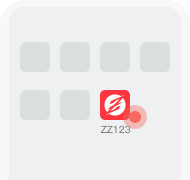
Tabla Beat Science
by John Vallier
The North Indian drums know as the tabla were said to have been invented in the 13th century by Amir Khusrau, a disciple of the Sufi saint Hazrat Nizemuddin Aluya. At the time, Khusrau sawed a pakhawaj (a single two-headed wooden drum) in two. Though no one may never know exactly why Khusrau felt it necessary it to saw a pakhawaj in half, his act gave birth to the tabla. Since that time, the tabla have been conceived to accompany vocalists and such instruments as the sitar (a multi-stringed lute), bin (a seven-stringed tube zither), venu (a side-blown cane flute), saord (a lute with a parchment soundboard and metal frets), and the sarangi (bowed lute).
The late Ustad Alla Rakha, who played for many years with Ravi Shankar, is widely credited with having expanded the repertoire and the role of the tabla. Thanks in great part to his ingenuity and determination, today the tabla is no longer considered to be merely an accompanying instrument. In honor of his impressive contributions to the world of tabla, the musical consortium known as Tabla Beat Science has dedicated their debut CD, Tabla Matrix, to the memory of Ustad Alla Rakha. By asking some of the most highly regarded tabla players in the world to play with a variety of musicians and programmers, producer and bassist Bill Laswell has essentially appropriated the ancient tradition of the tabla and fused it with contemporary electronica studio wizardry. Tabla Beat Science is comprised of Ustad Alla Rakha's son and tabla superman Zakir Hussain, venerated sarangi player Ustad Sultan Khan, Indian and jazz percussion innovator Trilok Gurtu, New York drummer Karsh Kale, bass and drum visionary Talvin Singh, music programmer Brad Somatik, and producer/bassist Bill Laswell. An innovative and creative union of musicians, Tabla Beat Science pushes the envelope of traditional tabla playing and, perhaps more importantly, breathes fresh air into electronica by introducing traditional acoustic virtuosity into the mix. The collective recorded an August 2001 performance and released it as the double-disc Live in San Francisco at Stern Grove album in 2002.
The North Indian drums know as the tabla were said to have been invented in the 13th century by Amir Khusrau, a disciple of the Sufi saint Hazrat Nizemuddin Aluya. At the time, Khusrau sawed a pakhawaj (a single two-headed wooden drum) in two. Though no one may never know exactly why Khusrau felt it necessary it to saw a pakhawaj in half, his act gave birth to the tabla. Since that time, the tabla have been conceived to accompany vocalists and such instruments as the sitar (a multi-stringed lute), bin (a seven-stringed tube zither), venu (a side-blown cane flute), saord (a lute with a parchment soundboard and metal frets), and the sarangi (bowed lute).
The late Ustad Alla Rakha, who played for many years with Ravi Shankar, is widely credited with having expanded the repertoire and the role of the tabla. Thanks in great part to his ingenuity and determination, today the tabla is no longer considered to be merely an accompanying instrument. In honor of his impressive contributions to the world of tabla, the musical consortium known as Tabla Beat Science has dedicated their debut CD, Tabla Matrix, to the memory of Ustad Alla Rakha. By asking some of the most highly regarded tabla players in the world to play with a variety of musicians and programmers, producer and bassist Bill Laswell has essentially appropriated the ancient tradition of the tabla and fused it with contemporary electronica studio wizardry. Tabla Beat Science is comprised of Ustad Alla Rakha's son and tabla superman Zakir Hussain, venerated sarangi player Ustad Sultan Khan, Indian and jazz percussion innovator Trilok Gurtu, New York drummer Karsh Kale, bass and drum visionary Talvin Singh, music programmer Brad Somatik, and producer/bassist Bill Laswell. An innovative and creative union of musicians, Tabla Beat Science pushes the envelope of traditional tabla playing and, perhaps more importantly, breathes fresh air into electronica by introducing traditional acoustic virtuosity into the mix. The collective recorded an August 2001 performance and released it as the double-disc Live in San Francisco at Stern Grove album in 2002.
하나의















